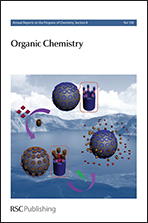Biotransformations
Abstract
This report reviews significant developments in applications of biological catalysis in synthetic organic chemistry for the year 2012. Hydrolytic enzymes have been coupled with ruthenium and iridium catalysts for the dynamic kinetic resolution (DKR) of exocyclic allylic alcohols, secondary alcohols and lactic acid esters. Alcohol dehydrogenases (ADHs) have been applied to the DKR of α-substituted β-esters and for the first time to the oxidative resolution of racemic aldehydes. Ene-reductases have been shown to catalyse double-bond isomerisation reactions, and have been combined with ADHs to furnish a closed-loop system for the conversion of cyclohexenol to cyclohexanone. ADHs have also been combined with transaminases for the conversion of primary alcohols to terminal amines. Methylaspartate ammonia lyase has been engineered to have a broad substrate specificity including derivatives of the native substrate mesaconate and large amine nucleophiles. An amino acid dehydrogenase has been engineered to accept ketones, rather than keto-acids, as substrates, allowing the enzymatic reductive amination of ketones using only ammonia and NADH. Cytochromes P450 have been engineered for the regio- and enantioselective hydroxylation of artemisinin, and one P450 has been shown to catalyse a nitration reaction. The application of prenyltransferase enzymes in biotransformations has been explored in detail, and dehalogenases have been applied to the tandem kinetic resolution of substrates, and also evolved in vitro to catalyse enantiocomplementary dehalogenations of 1,2,3-trichloropropane.

 Please wait while we load your content...
Please wait while we load your content...